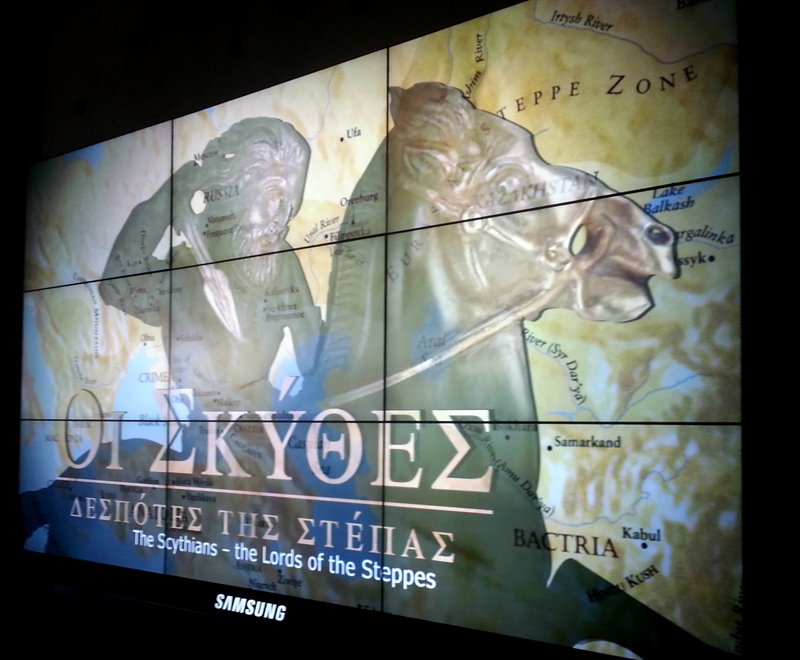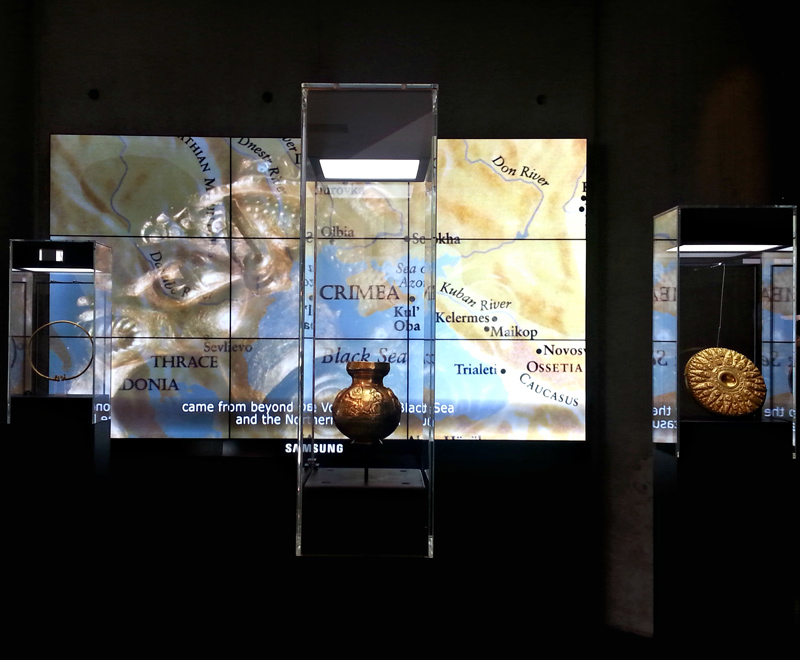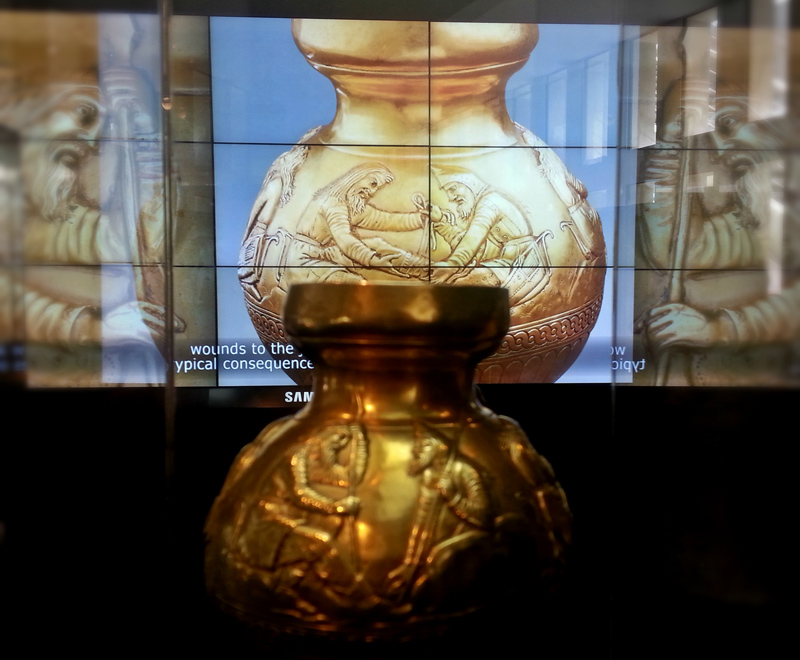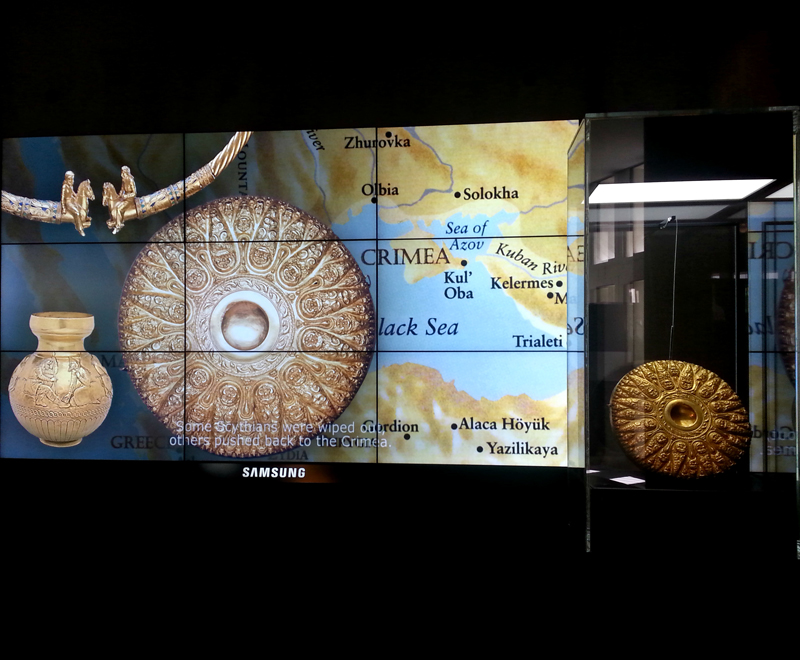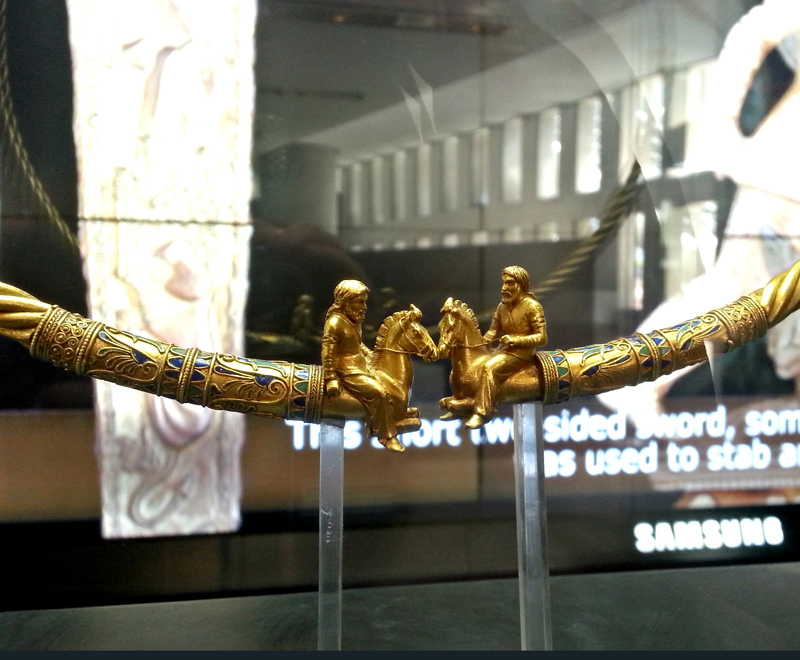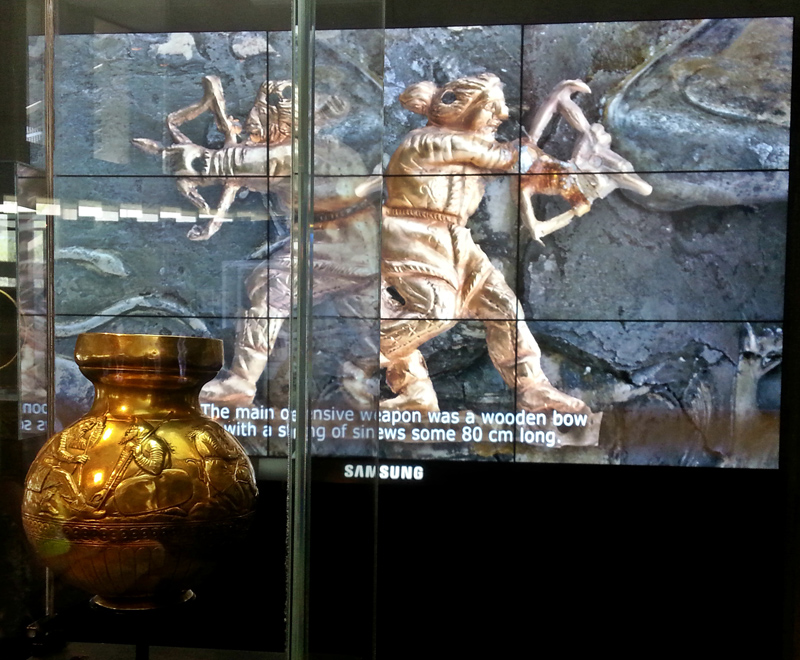11 March 2016 - 02 October 2016
Scythian heralds from the Hermitage to the Acropolis Museum
For the year 2016 Greece and Russia are programming a series of cultural events aimed at strengthening the traditional bonds of friendship and collaboration between the two countries. These events include archaeological exhibitions which will provide both the Greek and Russian public with the opportunity to become acquainted with important cultural aspects of the two countries.
The exhibitions commenced with two introductory initiatives: the presentation of a marble statue of the Archaic Kore 670 from the collection of the Acropolis Museum at the Hermitage Museum in St Petersburg, Russia, and the exhibition of three golden Scythian finds from the Hermitage collection in the Acropolis Museum.
The three objects, two vessels and a piece of jewelry are part of a unique Scythian grave context of the 4th cent. BC that was discovered in 1830 in the royal tumulus Kul Oba in Crimea. These masterpieces of metalworking were crafted by the Greek colonists at Crimea that had developed a close relationship with the nomadic Scythians, based on the commercial exchanges between them.
The Scythians were a nomadic tribe living in the Steppes north of the Black Sea. Valuable information regarding the Scythian way of life, their beliefs, ceremonies and myths are brought to us through the Greek historian Herodotus, who visited part of their vast country in the middle of the 5th cent. BC. In his lifetime, the leading social class of the Scythians was already captivated by Greek philosophy and art.
The three objects will be displayed in the foyer of the Acropolis Museum from 11 March 2016 to 2 October 2016. In this area no admission ticket is required.




